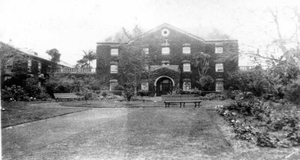The History of Mental Illness: From Skull Drills to Happy PillsImprovements in asylum care continued in America and Europe, although sub-par conditions persisted in numerous American and European institutions. Many countries around the world were also slow, or failed completely, to implement sufficient reforms. For example, asylums in Nigeria, Africa were not even established until 1906 after citizens started complaining about the disruptive behavior of mentally ill individuals that were left to roam the streets and wander from village to village. Until that year, the mentally ill were either sent to asylums in Sierra Leone or locked in the lunatic ward of local prisons. When asylums were finally established in Lagos and Abeokuta, the conditions were less than pleasant. Common complaints included dark, overcrowded cells, a lack of basic supplies, poor bathing facilities, and the use of chains to restrain patients. Very little treatment was offered to help the patients with their mental illnesses with the exception of minimal occupational therapy and agricultural work as well as the administration of sedatives to keep patients calm and under control—a practice that was likely more beneficial to the staff than the afflicted (Sadowsky 23-35). Significant advances in psychological concepts after the mass establishment of asylums did not arise until the development of psychoanalysis by Sigmund Freud in the late 1800s to early 1900s. Examination of an earlier practice, Mesmerism, must be mentioned first though as it is commonly posited to have provided a foundation for later psychoanalytic techniques. Austrian physician Franz Mesmer believed that human bodies contained a magnetic fluid that was affected by the planets and determined one’s health depending on its distribution. Mesmer concluded that all persons were capable of using their own magnetic forces to affect the magnetic fluid in others and considered himself to be powerful enough to cure illnesses with his “animal magnetism.”Mesmer gained a large following when he opened a clinic in Paris 1778 and started practicing his “mesmerism.” In order to affect cures, several patients at a time were seated around a tub containing various chemicals. Iron rods attached to the tub were applied to the afflicted parts of their body (as patients were generally hysterical and experiencing numbness or paralysis), after which Mesmer would emerge in light purple robe and circle around the room touching the patients either with his hand or with a wand. Although Mesmer’s techniques reportedly were effective, he was branded a fraud by his medical colleagues, and his “cures” were later believed to be the result of hypnotism, a psychoanalytic practice (Butcher 47, Alexander 127). Between the years of 1888 and 1939, Sigmund Freud, an Austrian neurologist and psychiatrist, published twenty-four volumes explaining his thoughts about personality and psychopathology called Psychoanalytic Theory. Freud believed that the human mind was structured in three divisions—the id, the ego, and the superego. The id functioned unconsciously, driven by the two main primal desires for sex and aggression. The superego functioned both consciously and unconsciously, demanding that the individual deny the id’s impulses and instead live a virtuous life, striving to meet society’s ideals. The ego also functioned both consciously and unconsciously and was deemed the mediator between an individual’s id and superego, always working to find a balance between what one desired and what society considered acceptable. The unconscious was thought to be the seat of psychopathology as it contained unacceptable desires and painful memories that had been repressed by the two higher functions as they would have been too unsettling to acknowledge. Freud believed that anxiety arose as these three parts of the human mind battled each other, resulting in mental illness and that if the individual could only reveal and address the content of their unconscious, then their mental ailments would be cured (Myers 596-597). The resulting treatments created by Freud are known as psychoanalysis, or “talking cures” and began with hypnosis, a revised form of mesmerism (“Timeline”). When this specific method did not prove to be effective, Freud turned to free association in which the patient was instructed to relax and share whatever thoughts came to mind, no matter how trivial or embarrassing they might have been. Freud believed that these thoughts would create a path that he could follow into the patient’s unconscious, where he could then retrieve years of repressed thoughts and feelings. The unconscious was also thought to be revealed through an individual’s beliefs, habits, and even slips of the tongue and pen, which came to be known as “Freudian slips.” Dream analysis was another popular method of treatment promoted by Freud. Patients were asked to record their dreams, sometimes every morning in a journal kept bedside. The psychoanalyst would then study the manifest content of the dream, or what was remembered by the patient, and search for latent content, or the unconscious materials that were thought to be censored by the conscious mind and instead encoded as symbols (Myers 597-598). Although Freud provoked many critics who considered his ideas pseudo-science, psychoanalysis was a very popular method of treating mental illness from the early to mid 1900s. Also in development and widespread use during this time were somatic treatments for mental illness such as electroconvulsive therapy, psychosurgery, and psychopharmacology. These treatments were based on the biological model of mental pathology that assumes mental illness is the result of a biochemical imbalance in the body and can be compared to physical diseases. Therefore, somatic treatments were designed to correct an individual’s chemical imbalance in order to restore their mental health. Electroconvulsive therapy has roots in methods designed to shock the body but without the aid of electricity. In 1933, Manfred Sakel reported his first experimental findings, testing the efficacy of insulin-shock treatment on schizophrenic patients in Berlin, Germany. Insulin was administered to the patient in a dose high enough to induce coma, and although the treatment seemed to be beneficial to individuals in the early stages of schizophrenia, it was not proven to be useful in advanced cases of schizophrenia. Sakel’s vague theoretical rationale for this specific method and the difficult regimen of care this treatment required also led to the abandonment of insulin-shock therapy (Alexander 280). Ladislaus Joseph von Meduna experimented with shock therapy and schizophrenia in Budapest, Hungary, also during the year 1933. Instead of insulin, Meduna injected patients with Metrazol, a less toxic synthetic preparation of camphor. This treatment was soon abandoned as it possessed a period of unpredictable length between injection and convulsions, giving the patient just enough time to become fearful and uncooperative. It also often produced convulsions that were so severe as to cause fractures (Alexander 281). Finally in 1938, Italian physicians Ugo Cerletti and Lucio Bini administered the first shock therapy using electricity to a schizophrenic patient and received successful results (Alexander 282). This treatment soon became widespread and was used most often in America and Europe. There is some history of abuse associated with electroconvulsive therapy (ECT) though, that took place in mental institutions. Because the idea of an electrical current being passed through one’s head is undoubtedly frightening, ECT was used to intimidate, control, and punish patients, some of whom were subjected to this treatment over a hundred times (“Measuring”). Despite previous instances of abuse, this treatment is still used today, albeit with significant reforms. It is generally reserved only for the mentally ill who suffer from severe depression, especially of the variety accompanied by psychotic symptoms, and only as a last resort after the patient has not responded to any other treatments, including medication. Patients are also administered a general anesthetic and muscle relaxant prior to the treatment so that they do not suffer any discomfort and there is no danger of fractured bones. Electroconvulsive therapy is commonly performed on a patient three times a week until a dozen sessions are reached, although some patients may require more or less sessions to benefit. The only negative side effects reported are amnesia limited to the few hours before the session and disorientation; both disappear soon after ECT is stopped (Butcher 618-619).Continued on Next Page » Suggested Reading from Inquiries Journal
Inquiries Journal provides undergraduate and graduate students around the world a platform for the wide dissemination of academic work over a range of core disciplines. Representing the work of students from hundreds of institutions around the globe, Inquiries Journal's large database of academic articles is completely free. Learn more | Blog | Submit Latest in Psychology |


















